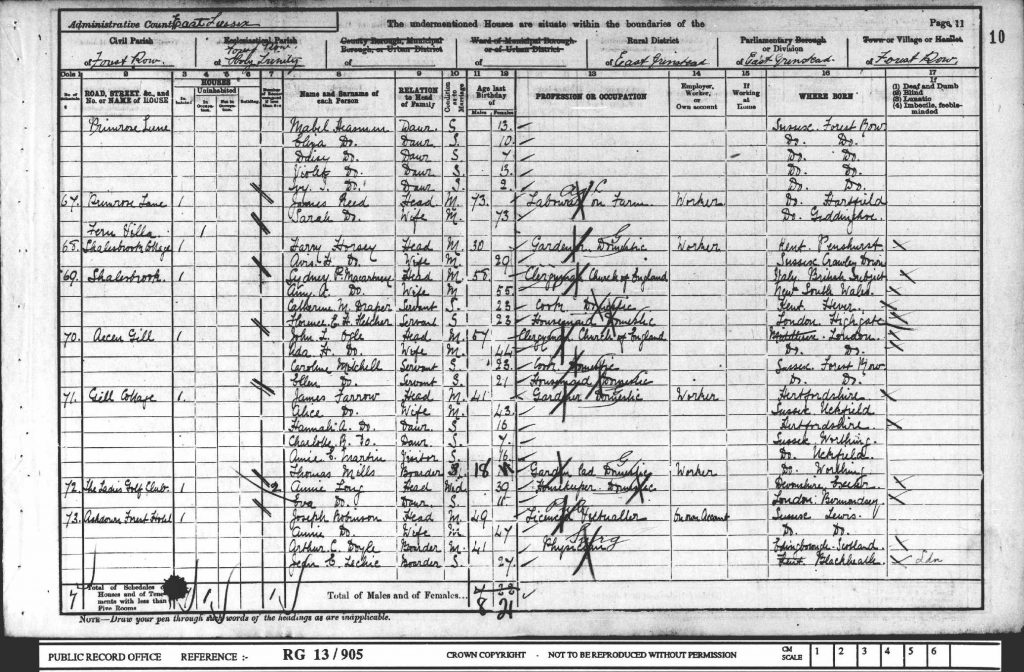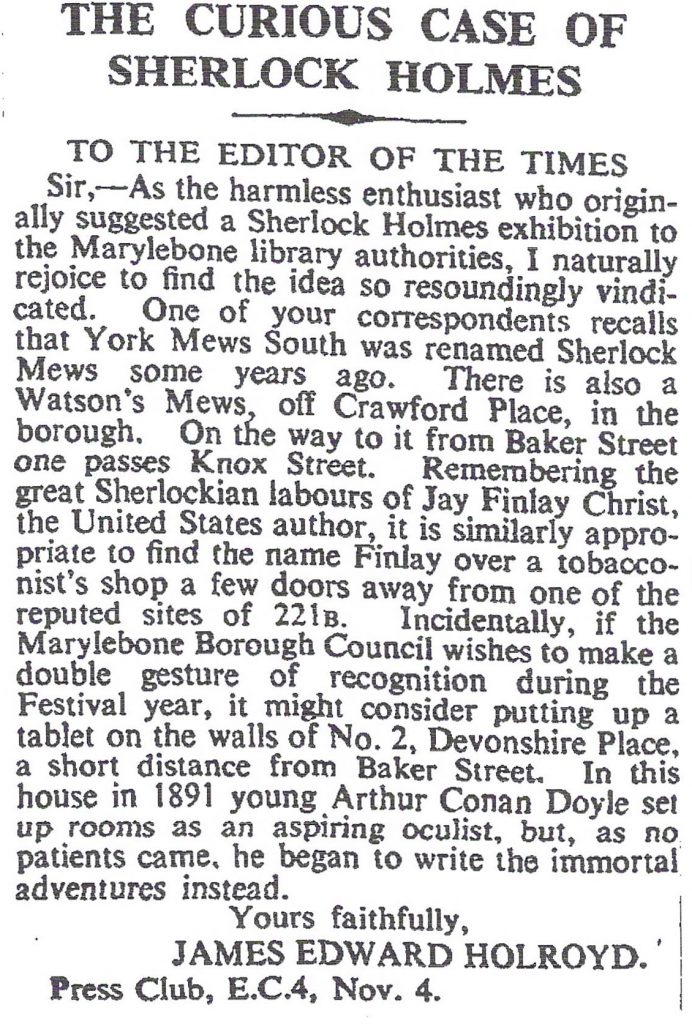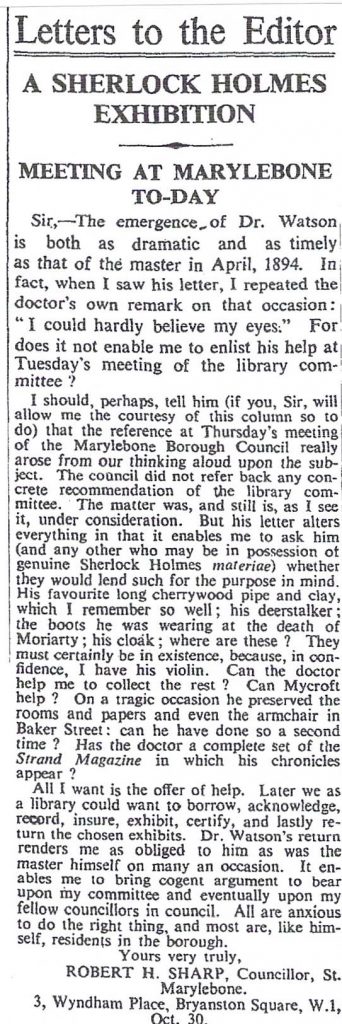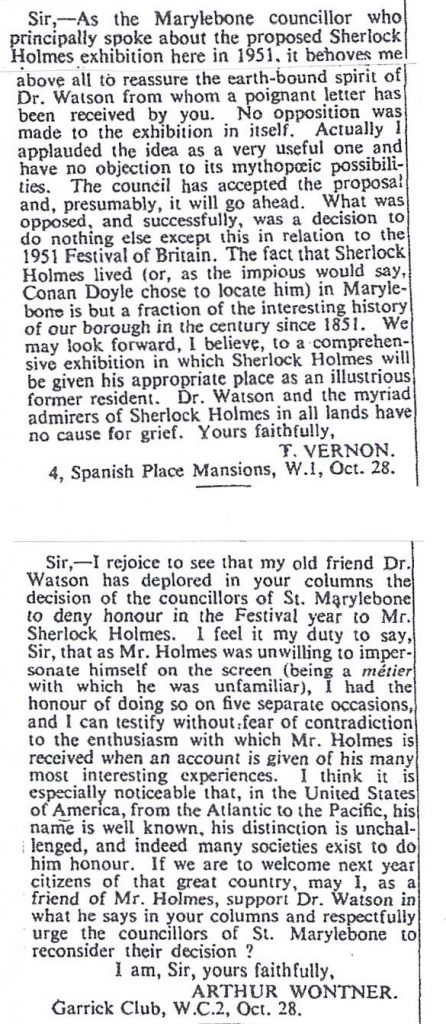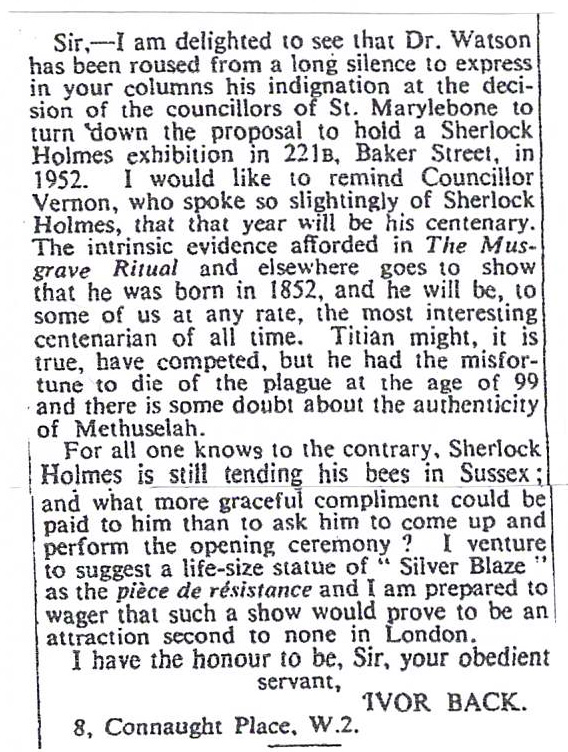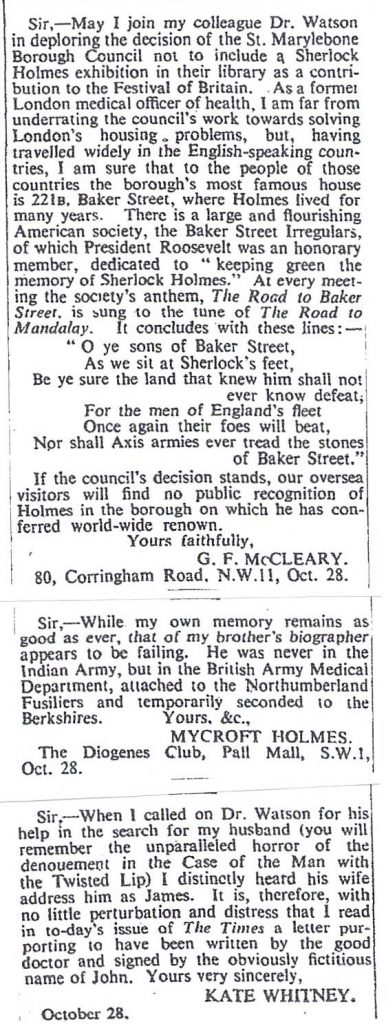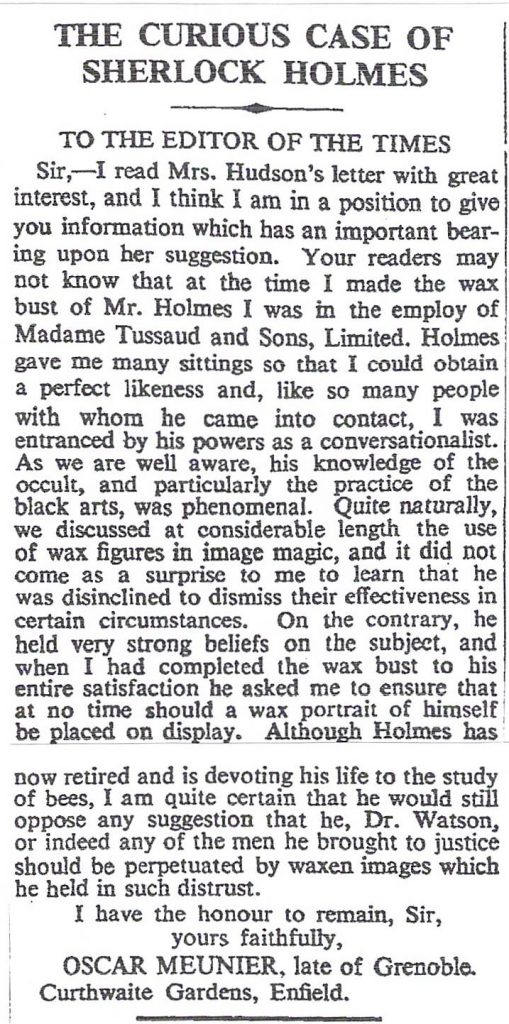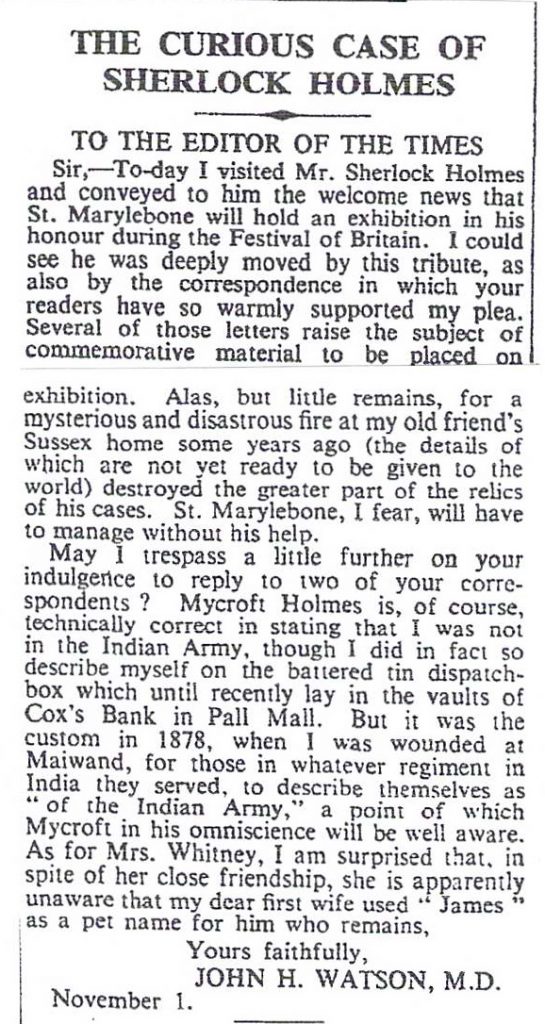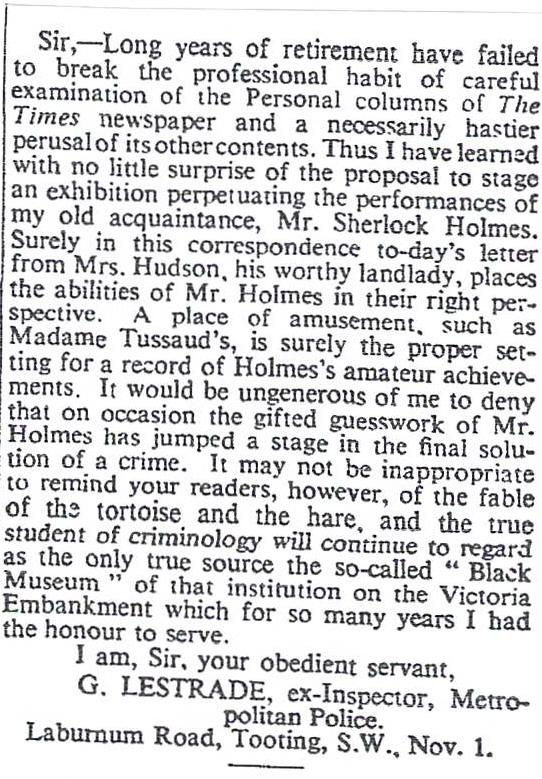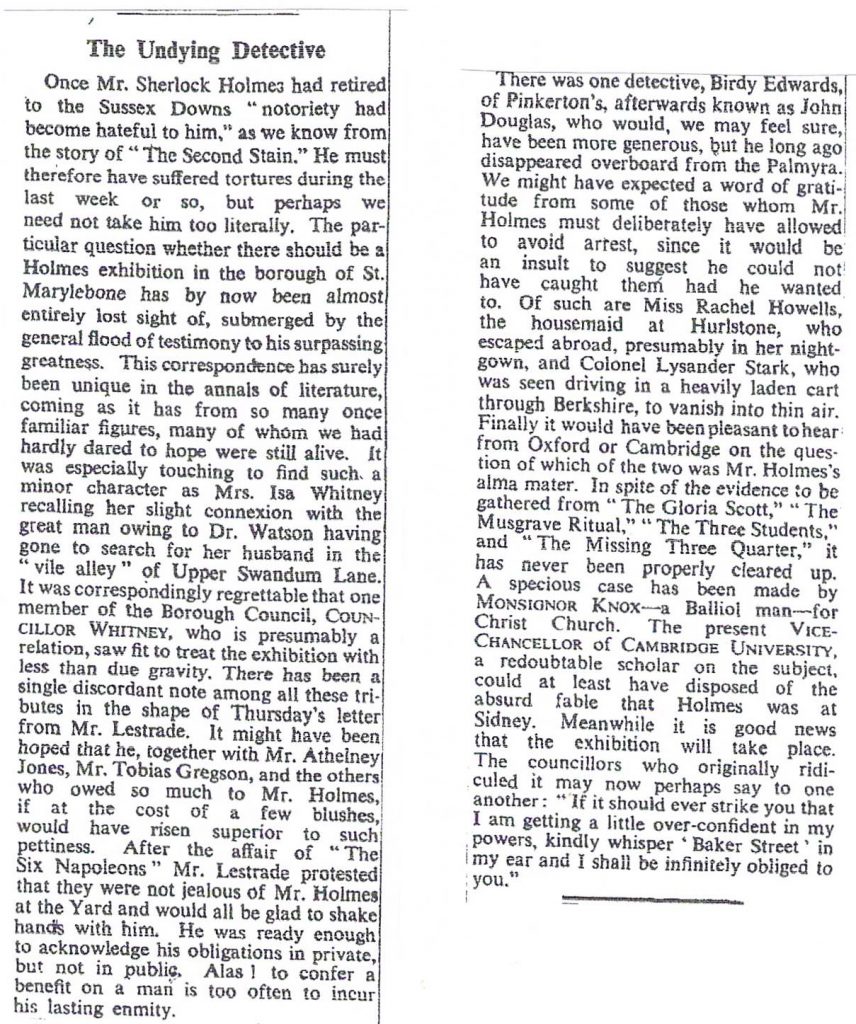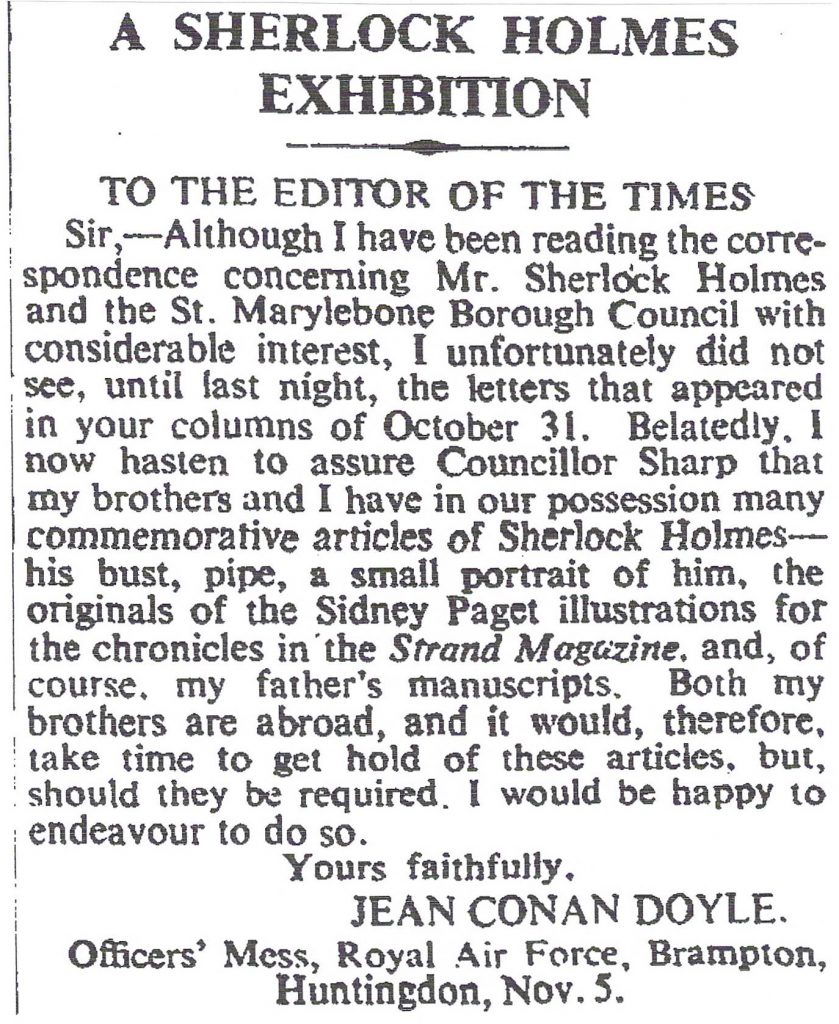
After the tragic events of May 1891, it was a couple of years before Watson could publish the account in The Final Problem. He found even the mention of Switzerland, Meiringen, and especially the Reichenbach Falls profoundly upsetting, and any thought of returning to that fateful locale was abhorrent.
We will never know whether or not he had the opportunity to return and take the brave step of staying in a hotel in the town and exorcising his fears by looking upon that swirling torrent at the falls.
The Parkhotel du Sauvage in Meiringen has a plaque claiming that it was the Englischer Hof where Holmes and Watson stayed in 1891, but this claim is false, as is the town’s claim to have invented the meringue. The hotel is large and prominent and not the sort of place they would have wanted to stay for fear of attracting the attention of Moriarty or his henchmen.
Most of the town was destroyed by a massive fire shortly after their visit (was this the work of Moriarty’s henchmen avenging the death of their master?), and therefore, the town has changed a great deal. Still, the town of Meiringen has many references to Holmes and Watson, and underneath the English church next to the Parkhotel du Sauvage is a museum that reconstructs their rooms on Baker Street. In front of the church is a statue of someone you may recognise!
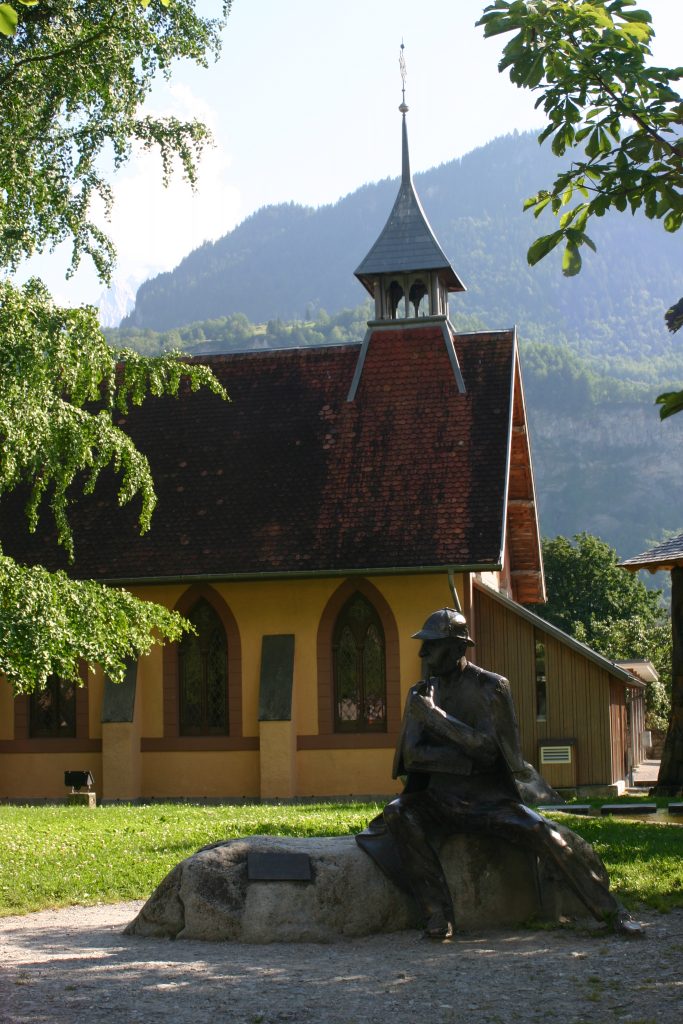
Back at the Falls, the many re-enactments of Holmes’s fight with Moriarty have been carried out in the wrong location because those staging these events have primarily been interested in the protagonists’ safety. They have generally not managed to climb the steep footpath which winds its way up the left-hand side of the falls when looking at them from below. This is the path that Holmes and Watson followed, and Sidney Paget’s drawing, based on Waton’s sketches, is reasonably accurate.
After visiting the Falls, Holmes and Watson intended to visit the tiny hamlet of Rosenlaui where the Hotel Rosenlaui still dominates the hamlet as it did in 1891. You can still obtain refreshments there before returning to Meiringen or continuing up the valley to the Grosse Sheidegge, which has some spectacular views.
If Holmes did follow this latter route after escaping Moriarty’s clutches, then he would have had no problems in either following the winding road or in following the more direct footpath which leads through the woods, even in the dark, for it would have been dark soon after he set out. There are, however, other paths in the woods above the Reichenbach Falls which provide more accessible routes towards Italy.
